While cycling between clients in London, we often see commuters contorted into all sorts of positions on their bikes. It’s no wonder people are put off cycling because of the aches they get from cycling even a short distance! Most people could get rid of some of the common aches and pains they get from cycling simply by eliminating the causes with subtle tweaks to their bike’s geometry.
If you’re getting back in the saddle after a break or are experiencing pain or tightness after cycling here’s what you need to pay attention to if you want to improve your riding and avoid injuries.
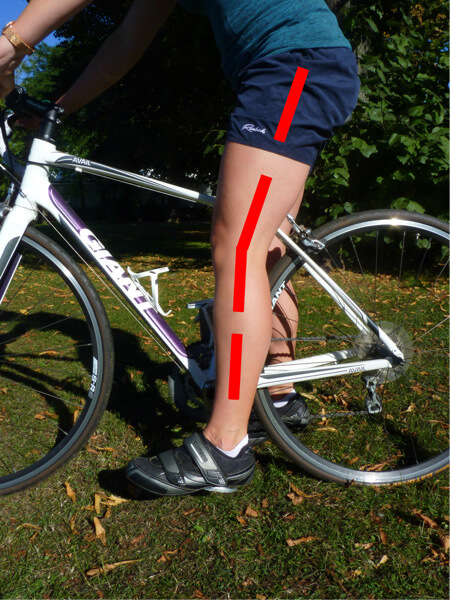
The most common cause of knee pain in cyclists is incorrect saddle height. By over-stretching for the pedals, you can strain the muscles of the knee, and with the saddle too low, the cramped and compacted position of the knee can make it painful over long distances. At the lowest part of your pedal stroke, your knee should not be fully locked. If your knees are stretching out in order for your toe to remain in contact with the pedal, this can stress the back of the joint, and the hamstring muscles which cross it.
If your saddle is too low, you won’t be able to straighten your knees enough, which puts a high load across the front of the knee cap. There are many ways to ensure you are on the correct size bike with your saddle set to the correct height, but here’s the rule of thumb we use when assessing the bike posture of our clients:
When sitting on your saddle, you should be able to rest the heel of the shoes you ride in comfortably on the pedal at its lowest point, with your knees just short of being fully extended. If your knee can’t fully straighten without lifting off the saddle, your saddle is too low; if you can fully straighten your knee but can’t keep your heel on the pedals, your saddle is too high.
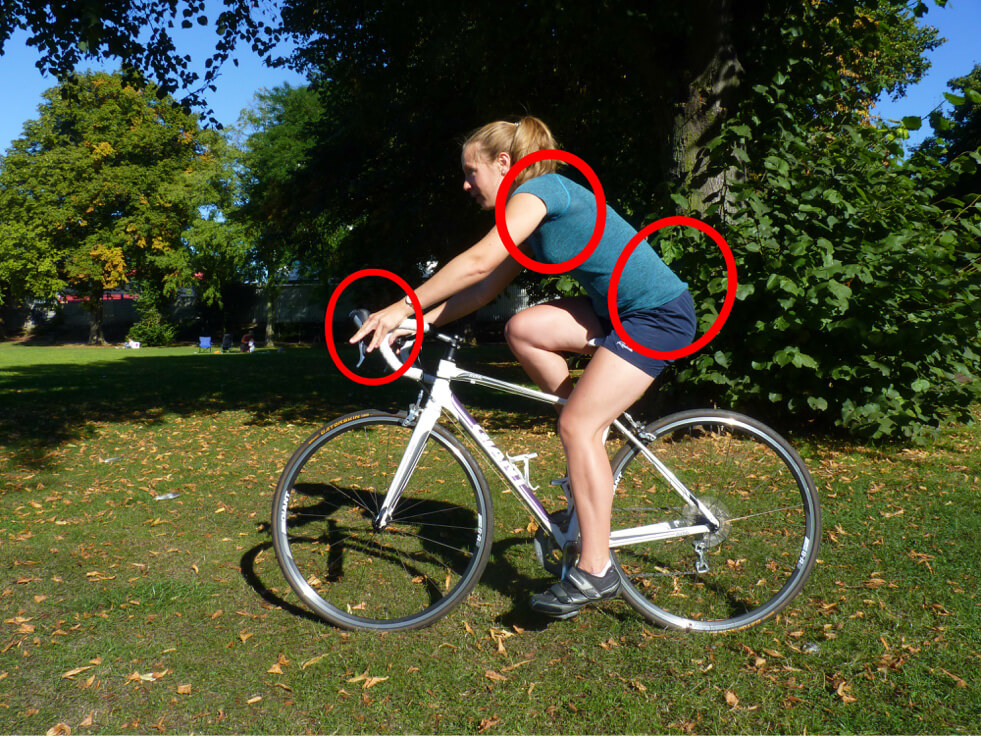
The nose of some saddles can tilt either upwards or downwards to suit individual preferences. If your saddle is tilted forwards, it can mean more weight is left on the arms to keep an upright position of the torso. This can be uncomfortable for your wrists and the front of your shoulder because you’ll put increased forces through the upper limbs. If the saddle is tilted backwards, it can leave you feeling you’re hanging on to the handle bars to maintain your position on the bike. This can cause the upper back muscles to work overtime to prevent you from falling backwards. Changing your saddle position can often alleviate these discomforts which happen most frequently in the upper back and shoulder.
Most common discomfort caused by incorrect bike posture:
A) Wrist pain from increased weight through arms
B) Upper neck and middle back pain from over-reaching and extending your neck for long periods of time
C) Lower back pain from excessive bending forwards
Some bike pedals don’t have cages around the front of the toe to hold the foot in place. These pedals often need specialist shoes which clip into the pedals themselves. The cleats which are drilled into the bottom of these shoes often have a lot of manoeuvrability so that you can adjust your foot position.
Often, if these haven’t been correctly measured and assessed, your foot position can be too inverted or everted (pigeon-toed or outward facing). Cycling with poor foot position can put tremendous pressure on the inside or outside borders of the knee, resulting in ligament and tendon strains.
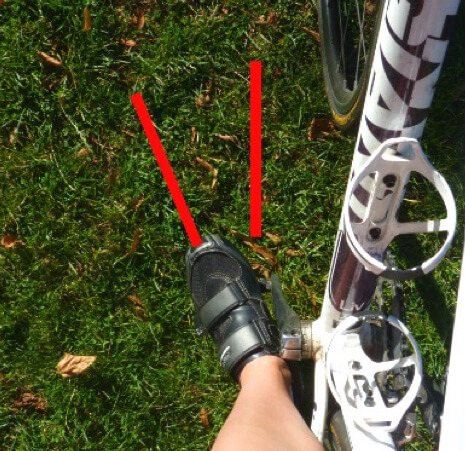
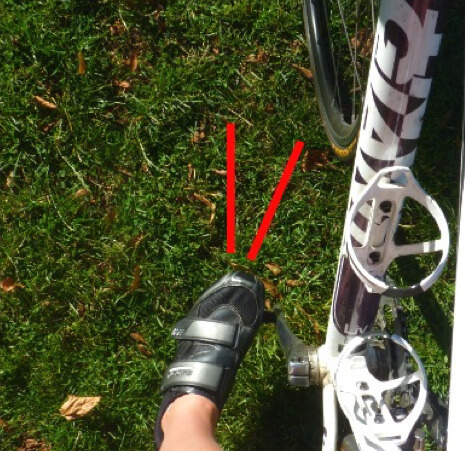
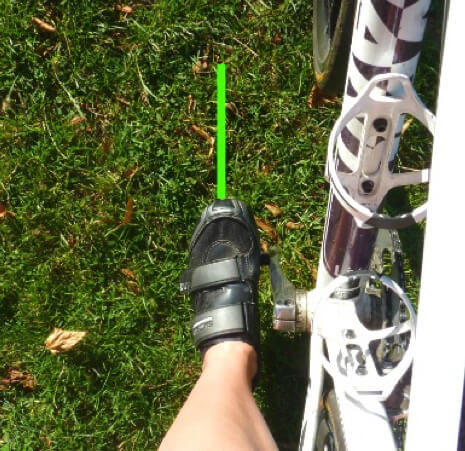
If you’re getting knee pain and you use these type of shoes or pedals, your cleats may need adjusting to hold your foot in a more neutral position while on the bike. There are lots of online video guides on how to address this, or you can bring your shoes to your physiotherapist, so that we can tweak them during your appointment.